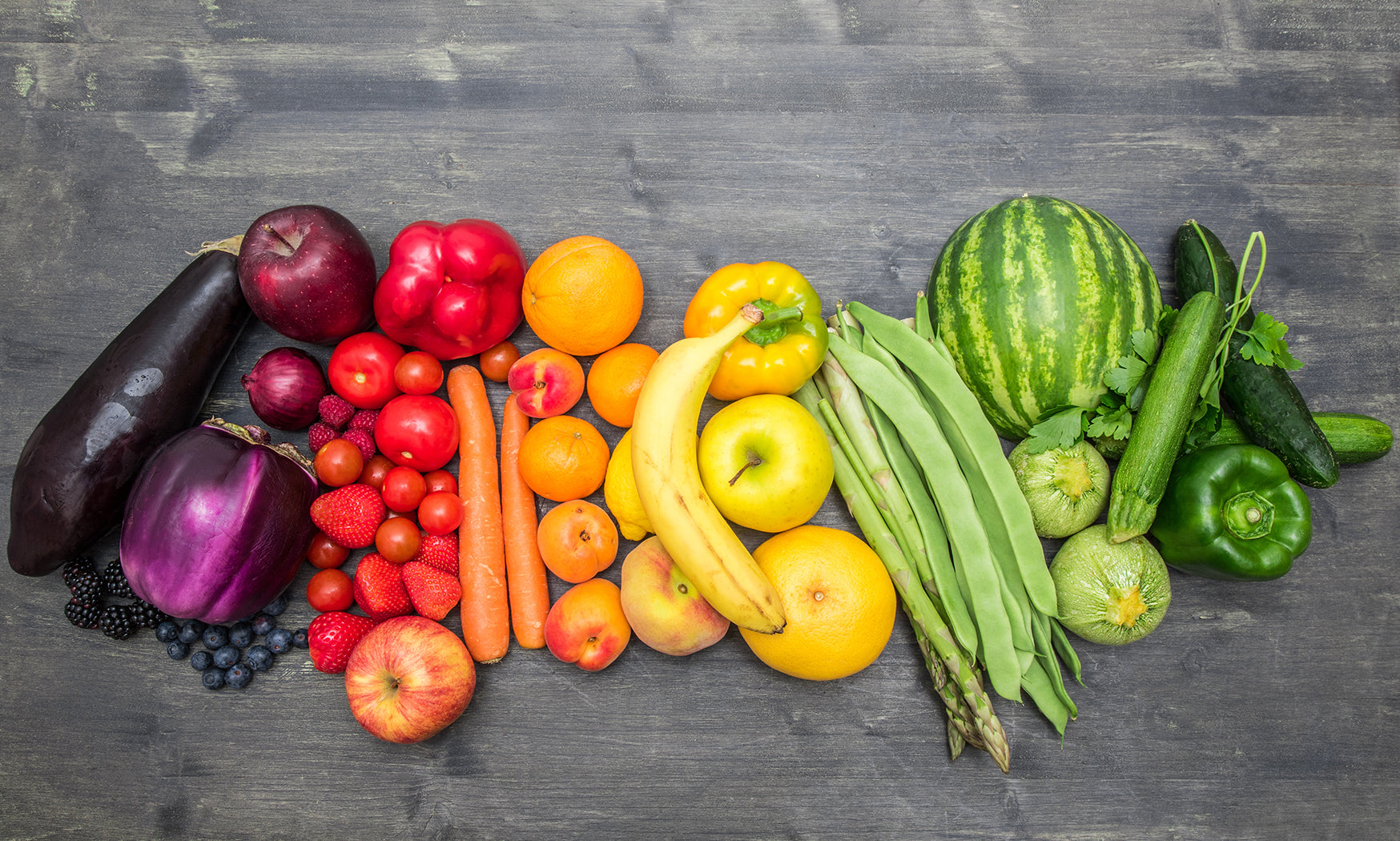
To be clear, we are not advocating your baby starts eating Skittles, but they might be onto something with their whole “Taste the Rainbow” campaign. Turns out vibrant and colorful foods offer more than just visual appeal. Colors are an indication of beneficial compounds that contribute to your baby's overall health and well-being.
By feeding your little ones a “rainbow” of foods, you’re providing them a diverse range of essential nutrients that support their growth and development.
In this blog post we explore the importance of incorporating a variety of colors in your baby's diet and the health benefits associated with each hue.
Red
Red fruits and vegetables, such as strawberries, tomatoes, beets, and red bell peppers, owe their vibrant color to powerful antioxidants like lycopene and anthocyanins. These compounds have been linked to reducing the risk of chronic diseases, promoting heart health, and supporting a healthy immune system (1, 2).
Orange
Orange-hued foods like carrots, sweet potatoes, and oranges are rich in beta-carotene, a precursor to vitamin A. Beta-carotene supports healthy vision, boosts the immune system, and promotes proper growth and development (3, 4).
Yellow
Yellow fruits and vegetables, including bananas, pineapples, yellow squash and bell peppers, provide a good dose of vitamin C, a powerful antioxidant that aids in collagen production, enhances iron absorption, and supports a healthy immune system. They also contain carotenoids like lutein and zeaxanthin, which contribute to eye health (5, 6).
Green
Green leafy vegetables like spinach, kale, and broccoli are packed with essential nutrients such as vitamins A, C, and K, as well as folate and iron. These nutrient powerhouses support bone health, boost the immune system, aid in blood clotting, and promote healthy digestion (7, 8).
Blue and Purple
Blue and purple foods like blueberries, grapes, purple potatoes, and purple cabbage owe their rich colors to anthocyanins, which have antioxidant and anti-inflammatory properties. Consuming these foods may help improve memory, promote a healthy heart, and support brain health (9, 10).
White and Brown
Although not as colorful, white and brown foods such as cauliflower, mushrooms, and whole grains also play a role in a balanced diet. These foods provide fiber, B vitamins, and minerals like potassium and magnesium, contributing to overall health and digestion (11, 12).
Feeding, and encouraging, your little ones a spectrum of colorful fruits and vegetables is a fun and healthy way to get all the nutritional benefits associated with each color and aim for a balanced and varied diet. The next time you are at the market, picking your produce, why not try that red onion instead of the white or that rainbow chard over the green or red kale for a little color variety.
And as always, because everyone is different we strongly recommend consulting your pediatrician or a registered dietitian for personalized guidance on your baby's nutritional needs and any specific considerations.
References:
Harvard T.H. Chan School of Public Health. (2020). The Nutrition Source - Antioxidants: Beyond the Hype. https://www.hsph.harvard.edu/nutritionsource/antioxidants/
National Institutes of Health. (2019). Lycopene. https://www.ncbi.nlm.nih.gov/pmc/articles/PMC7464847/
National Institutes of Health. (2019). Vitamin A. https://ods.od.nih.gov/factsheets/VitaminA-Consumer/
Mayo Clinic. (2020). Beta carotene. https://www.mayoclinic.org/drugs-supplements/beta-carotene-oral-route/proper-use/drg-20066795
National Institutes of Health. (2021). Vitamin C. https://ods.od.nih.gov/factsheets/VitaminC-Consumer/
National Eye Institute. (2019). Lutein and Zeaxanthin. https://www.nei.nih.gov/about/news-and-events/news/nih-study-confirms-benefit-supplements-slowing-age-related-macular-degeneration
National Institutes of Health. (2021). Vitamin K. https://ods.od.nih.gov/factsheets/VitaminK-Consumer/
National Institutes of Health. (2021). Iron. https://ods.od.nih.gov/factsheets/Iron-Consumer/
National Institutes of Health. (2022). Blueberries. https://www.ncbi.nlm.nih.gov/pmc/articles/PMC7442370/
Medical News Today (2021). What are the health benefits of purple foods? https://www.medicalnewstoday.com/articles/purple-foods
Mayo Clinic. (2021). Dietary fiber: Essential for a healthy diet. Retrieved from https://www.mayoclinic.org/healthy-lifestyle
